3D Product Configurator
Creating An Engaging Product Experience
- Elevate customization and configuration of products to a whole new level.
- Tailor dream cars, unique furniture, impeccable outfits, and products effortlessly.
- Get an array of styles and hues to infuse your vision with precision and creativity.
- A powerful online tool for complete personalization.
Customers who engage with a 3D web product configurator are 40% more likely to purchase a product.
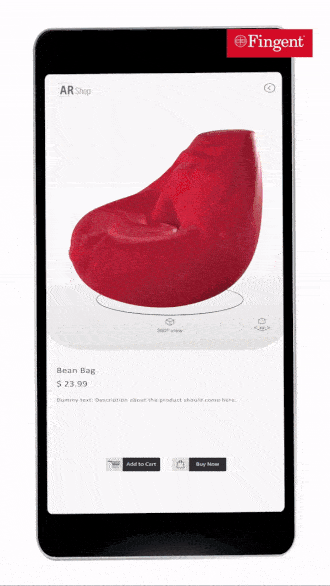
Examples
Custom 3D Product Configurators
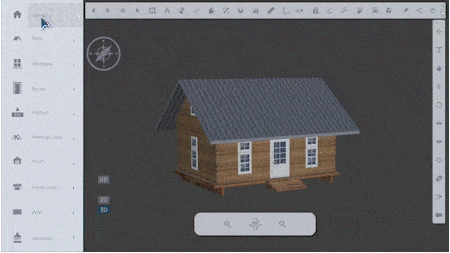
3D Shed Builder Configurator
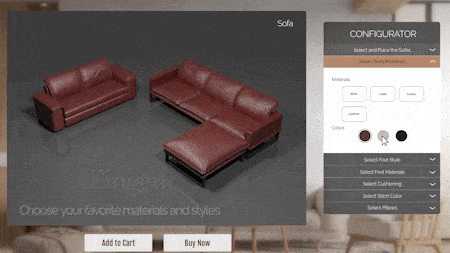
3D Furniture Configurator
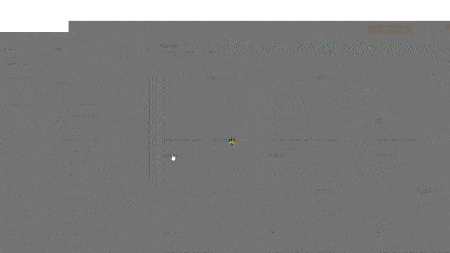
3D Apparel Configurator
Find Your Ideal 3D Product Configurator: Let Our Experts Steer You Right.
Key Features
Dynamic Capabilities of 3D Product Configurators
- Enhanced Customization Choices
- Live Visualizations in Real-Time
- 360° Panoramic View
- Effortless Zoom and Pan Controls
- Seamless Drag and Drop Interaction
- Perfect Compatibility Integration
- Seamless System Integration
- Smart Data Analytics
The Significance
Benefits & Possibilities of 3D Product Configurators for Businesses
Elevated Shopping Experience: Harnessing the power of personalization and customization features, customers reign supreme in shaping their purchase decisions.
Boosted Sales Momentum: Infuse excitement into shopping by engaging with products in immersive 3D, increasing the chance of purchasing.
Slashing Returns: Minimizes the number of returns due to mismatched expectations or incorrect sizing, as customers customize products upfront.
Efficiency Redefined: Seamlessly streamline shopping voyages by banishing manual configurations and embracing tech-driven transformations.
Marketing Magic: Fetch consumer preferences through 3D configurator data, allowing brands to curate strategies that truly resonate.
Success Stories
Featured Projects on 3D Product Configuration
A cabin and storage shed manufacturer based in Ohio elected to work with Fingent in the creation of a bespoke 3D Web Configurator. This innovative solution enriches customer interactions by offering novel self-service possibilities and an immersive user experience.
Solution Highlights:
- Interactive floor plans and designs
- Real-time 3D visuaization
- Accurate pricing estimation
- Seamless integration with the existing system

Getting Started
Building a 3D Product Configurator
Developing a 3D product configurator can be a daunting task, but with an expert approach and tools, it can be a rewarding experience that brings a new level of customization and engagement to your business. At Fingent, we follow a structured and standardized process to develop a product configurator that aligns with the business requirements and enhances the customer experience.
- Create a 3D model of the product using CAD or 3D scanning that customers can customize.
- Decide what product features and options will be configurable through the configurator.
- Choose a 3D configurator development platform based on the ease of use, compatibility, and level of customization offered.
- Set up the development environment.
- Integrate the 3D model into the platform, ensuring it is formatted and optimized for real-time rendering.
- Build a user interface that allows customers to interact with the 3D model and select their desired options.
- Test the 3D product configurator thoroughly, ensuring it functions properly and provides a positive user experience.
Cost
Cost of Developing a 3D Product Configurator
The cost of building a product configurator can vary widely depending on factors such as the complexity of the product, level of interactivity, customization options, user interface, and integration with existing systems. You can choose to develop the configurator in-house or outsource the development to an expert development company.
What influences the cost of 3D configurator development?
Content richness: Rich content demands meticulous coding, which can influence the price.
3D model detailing: The more intricate your 3D models, the more time and effort it takes, impacting the expense.
Platform choice: Different platforms come with varying costs for integration and maintenance.
Immersive depth: Deeper immersion requires advanced tech, potentially raising the price.
Rendering approach: The technique used to render the 3D visuals can affect the overall development cost.
Curious about the cost and ROI of a 3D configurator?
Latest Insights
More Insights on 3D Product Configurator
3D Web Configurators: Ensuring Business Continuity in the Home Improvement Industry
COVID-19 pandemic’s impact has ushered in a dramatic shift in the behavior and preference of customers. However, this shift was not restricted to customers alone. Social distancing and isolation protocols put industries like home improvement in a state of dilemma, as their business depends highly on showcasing products to customers in a physical space, preferably in-store.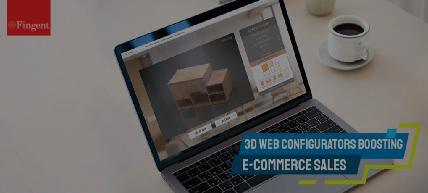

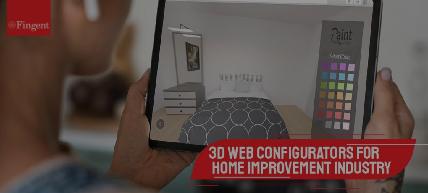



 US
US Insurance
Insurance









































